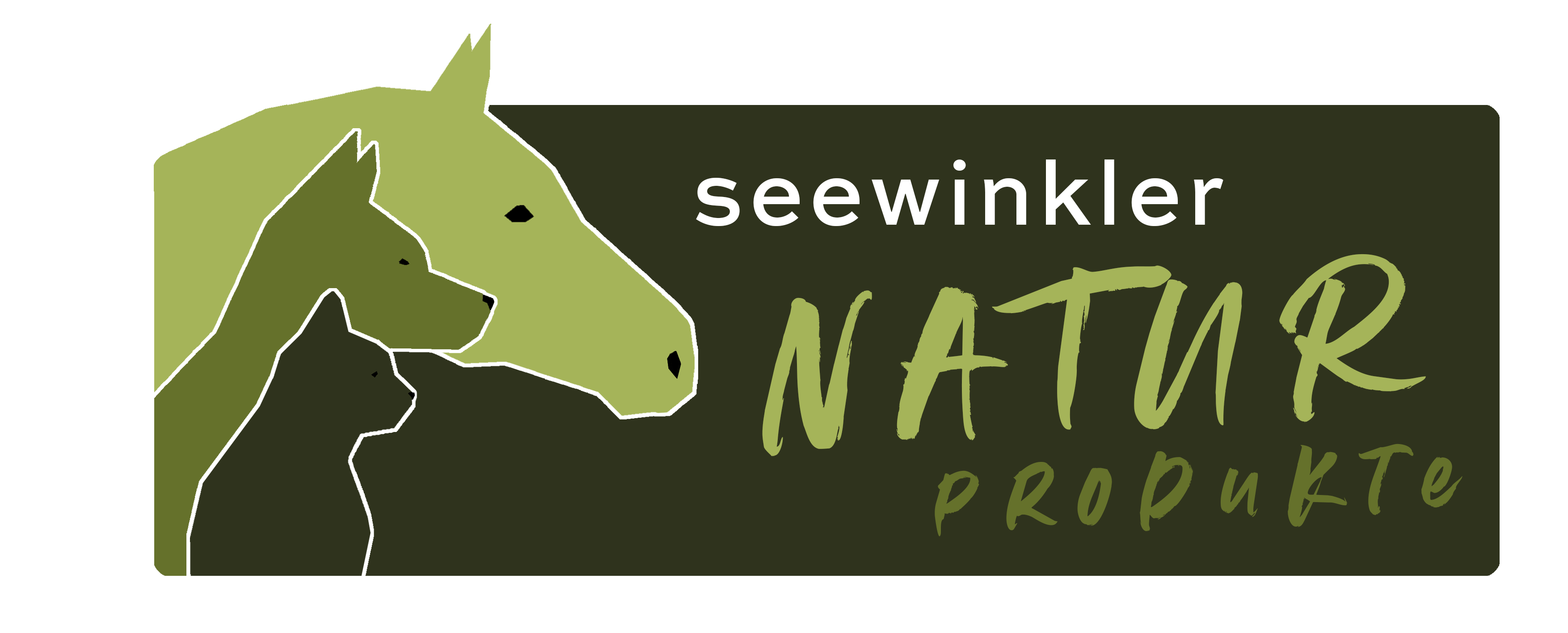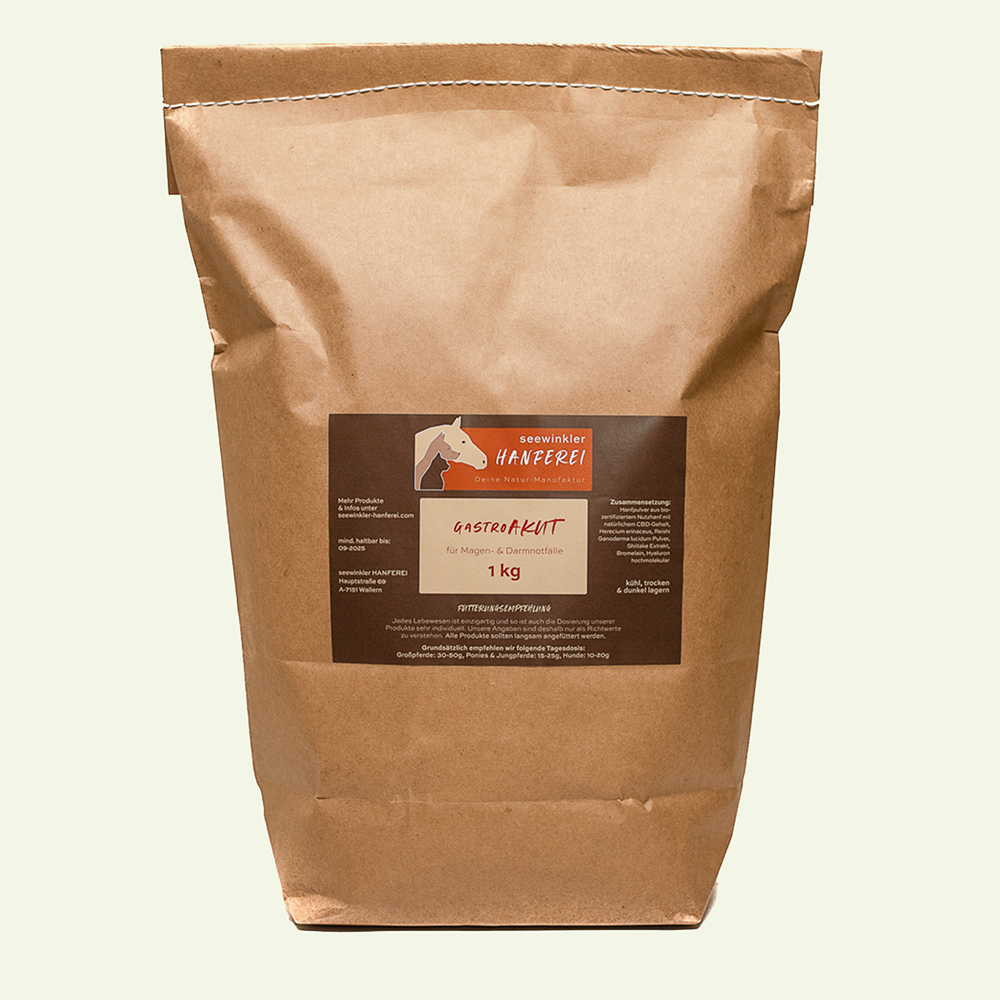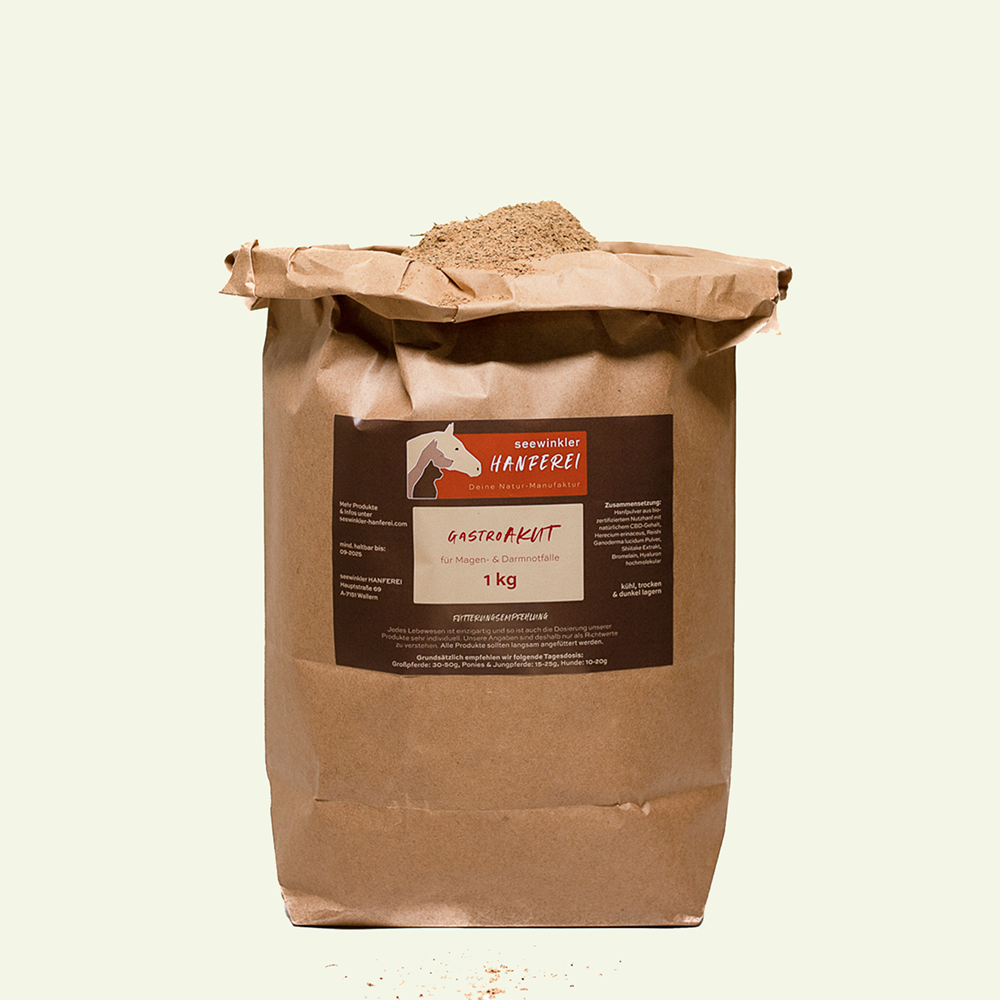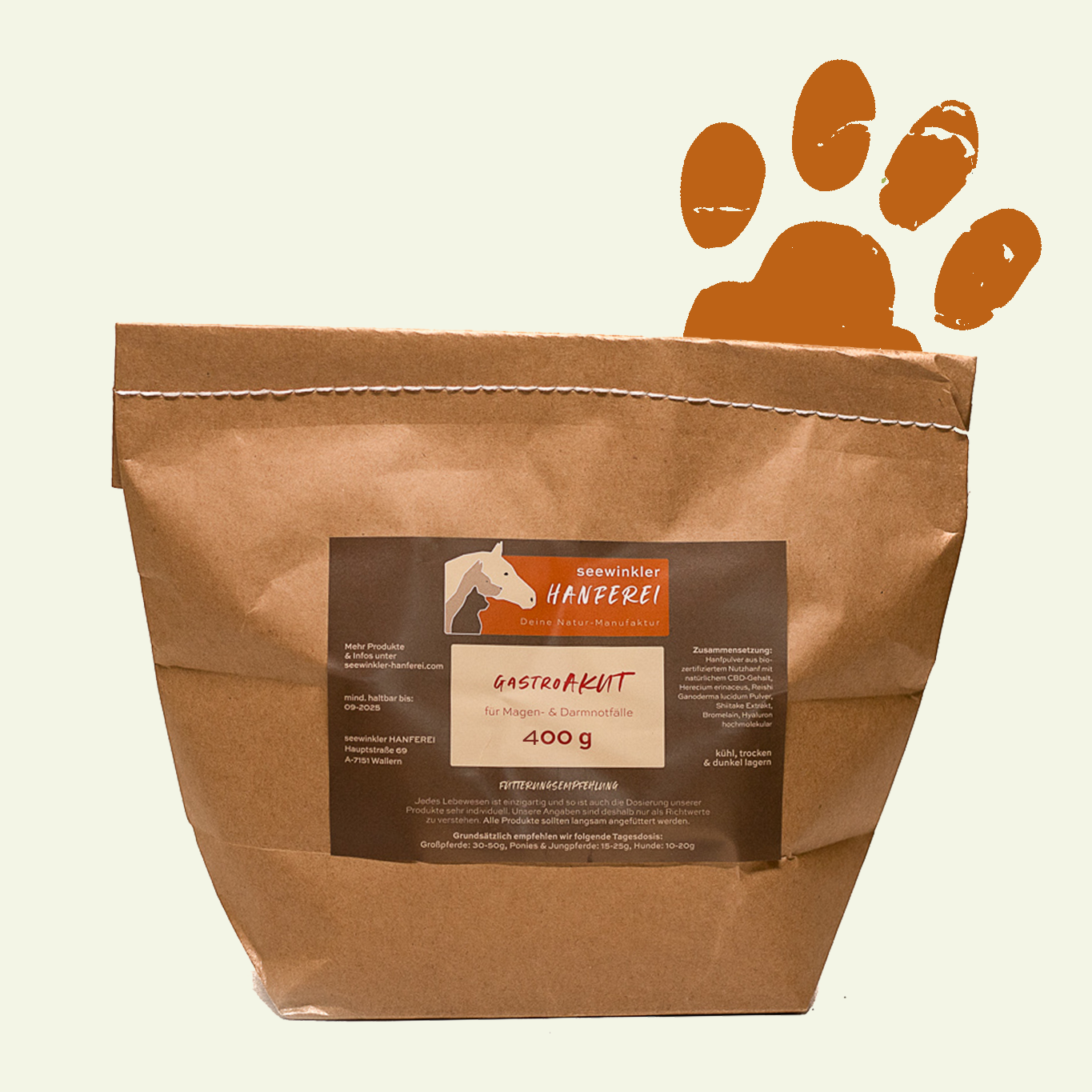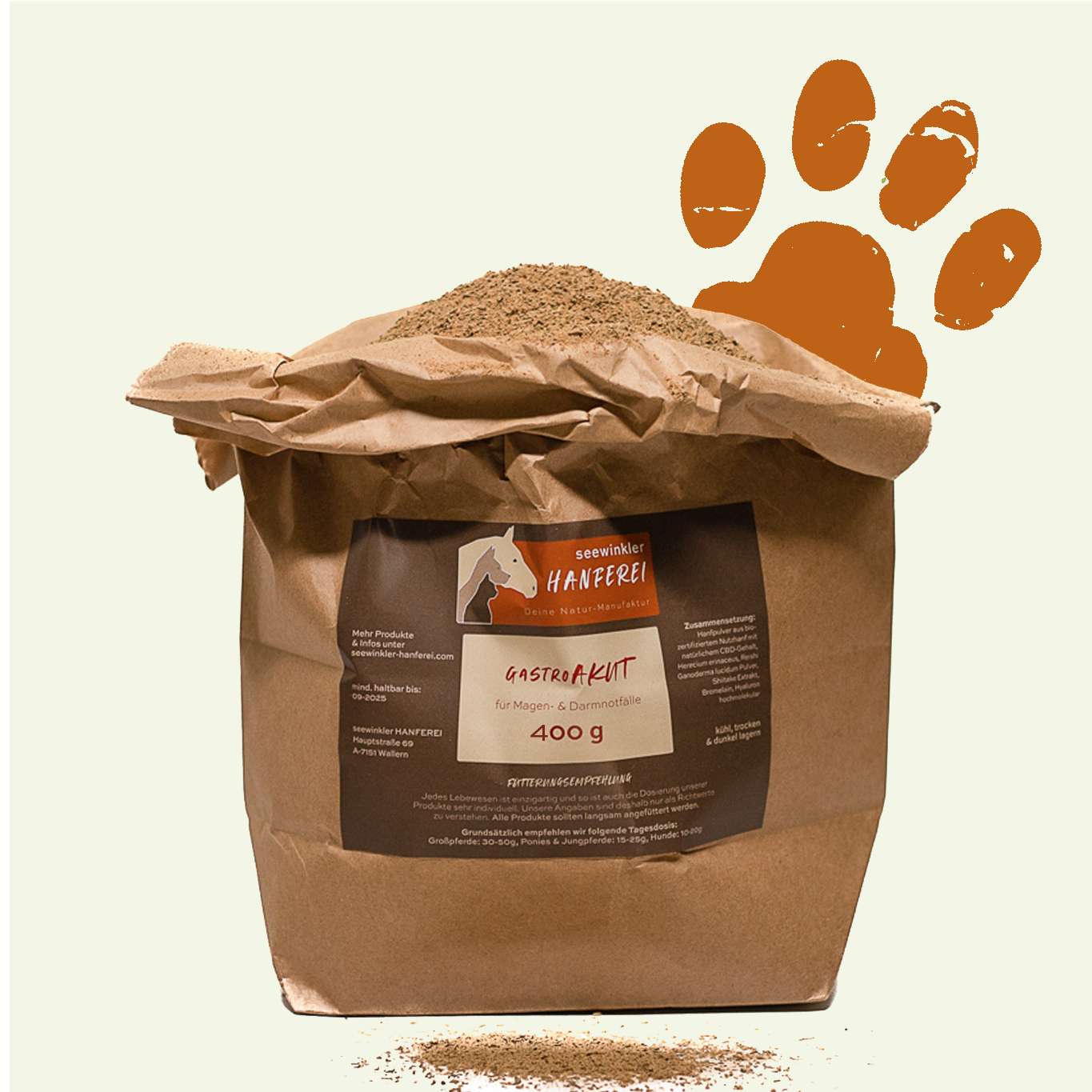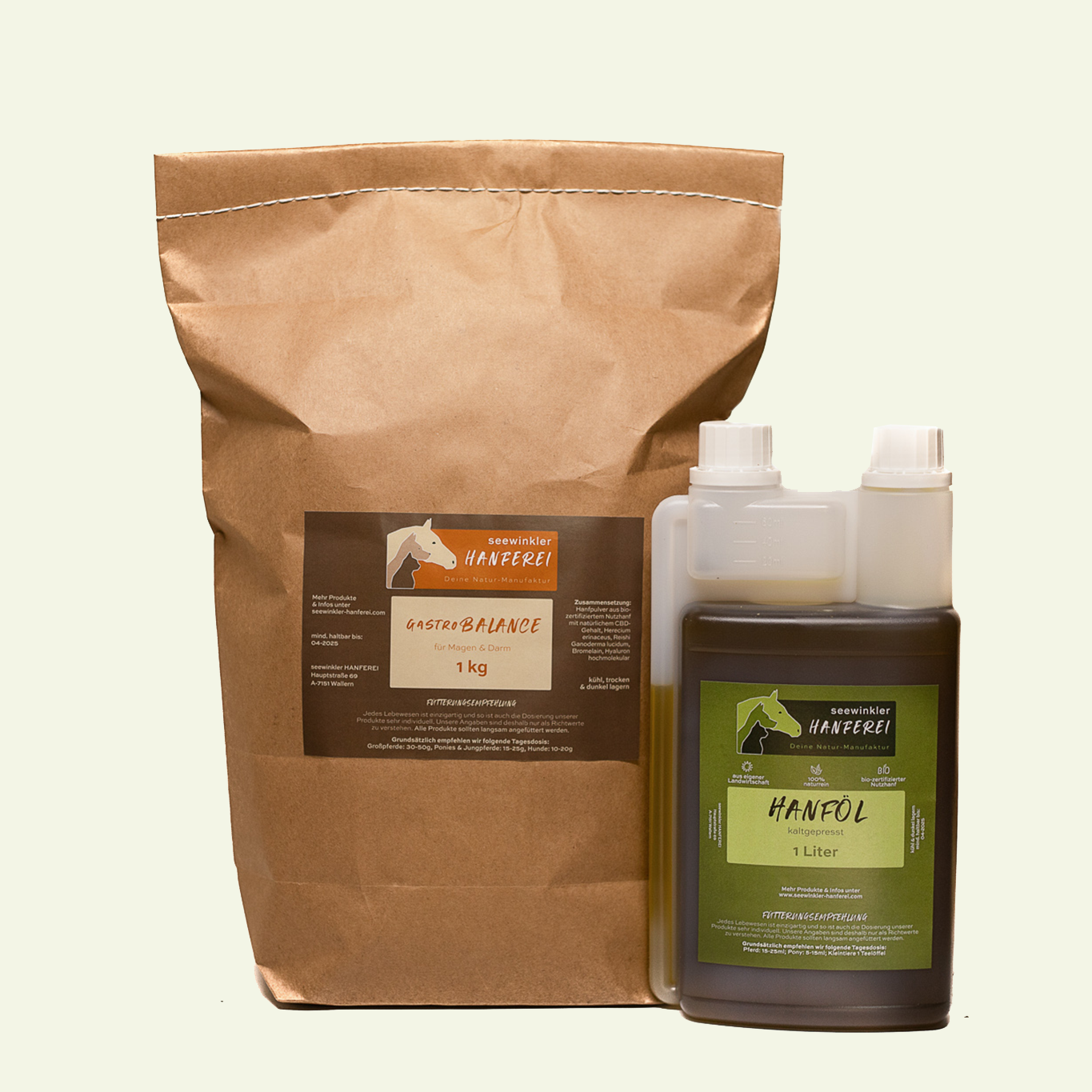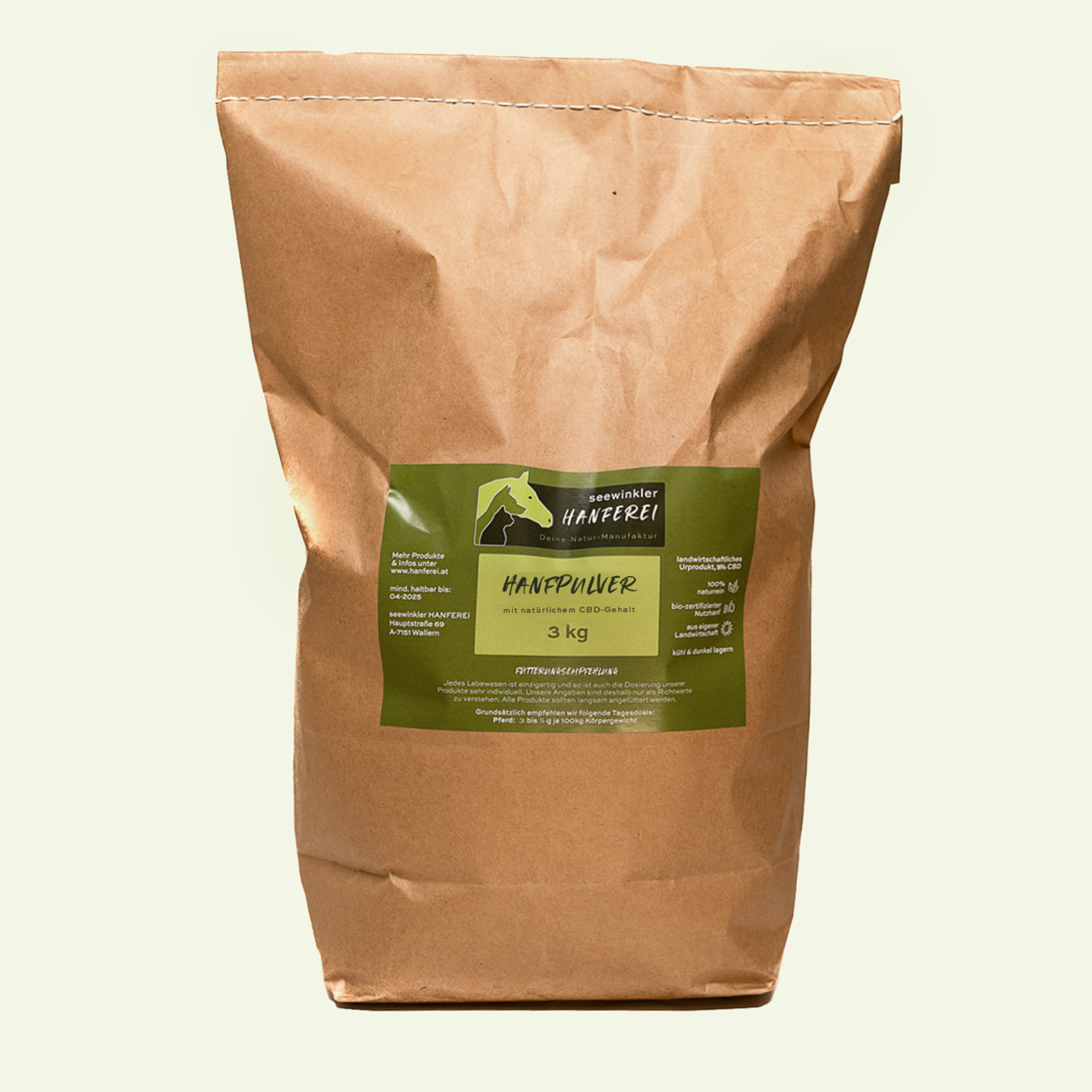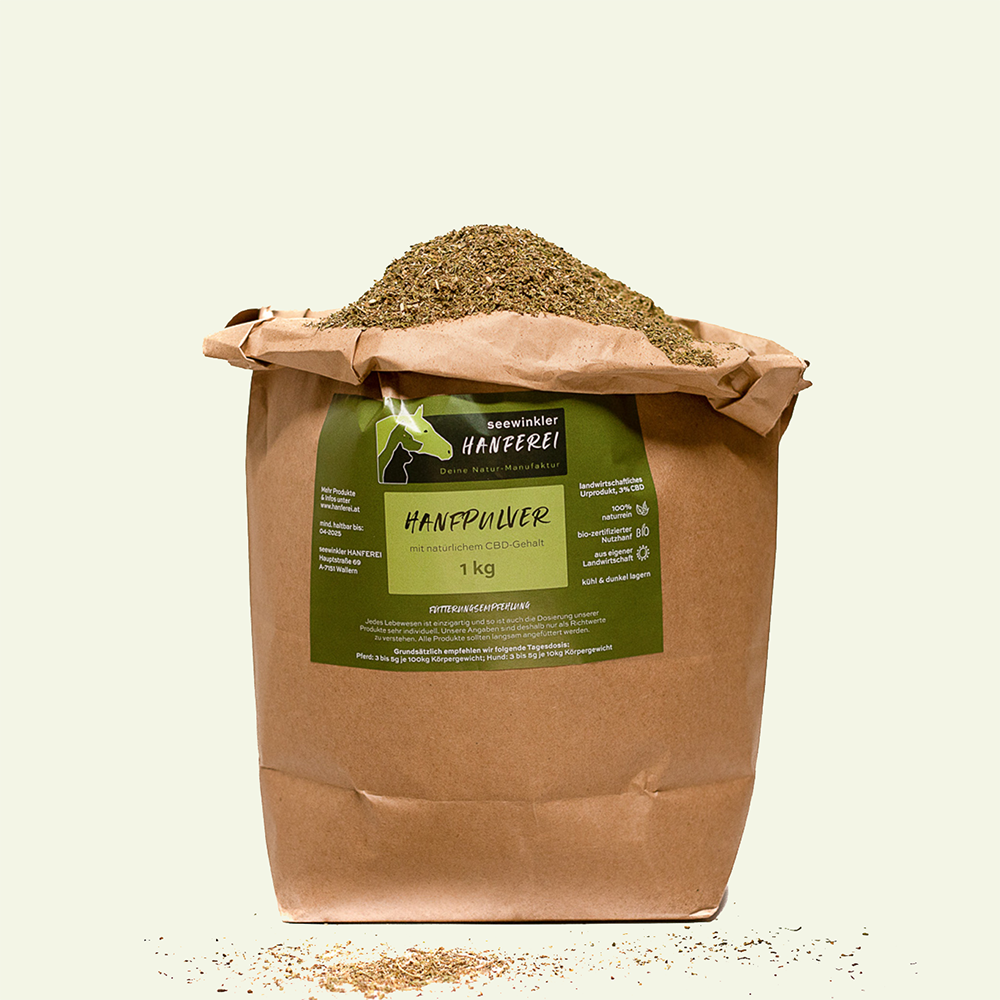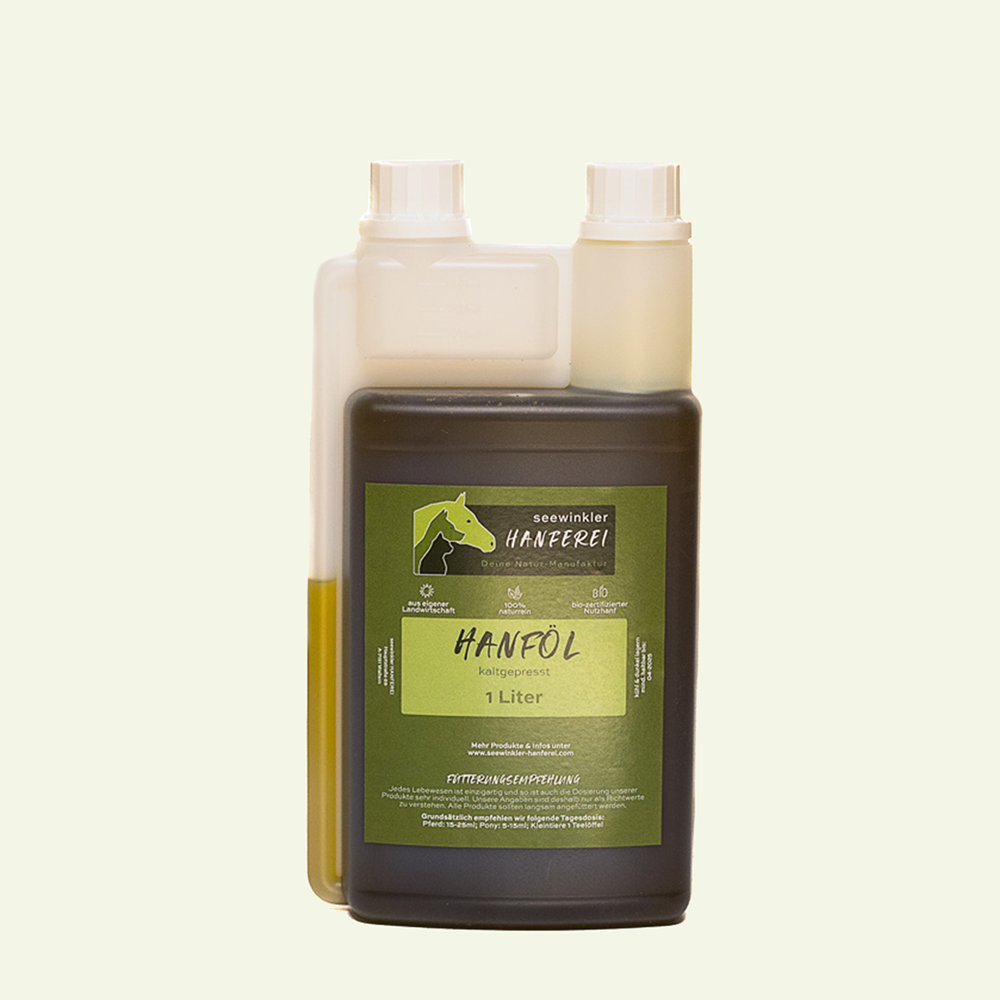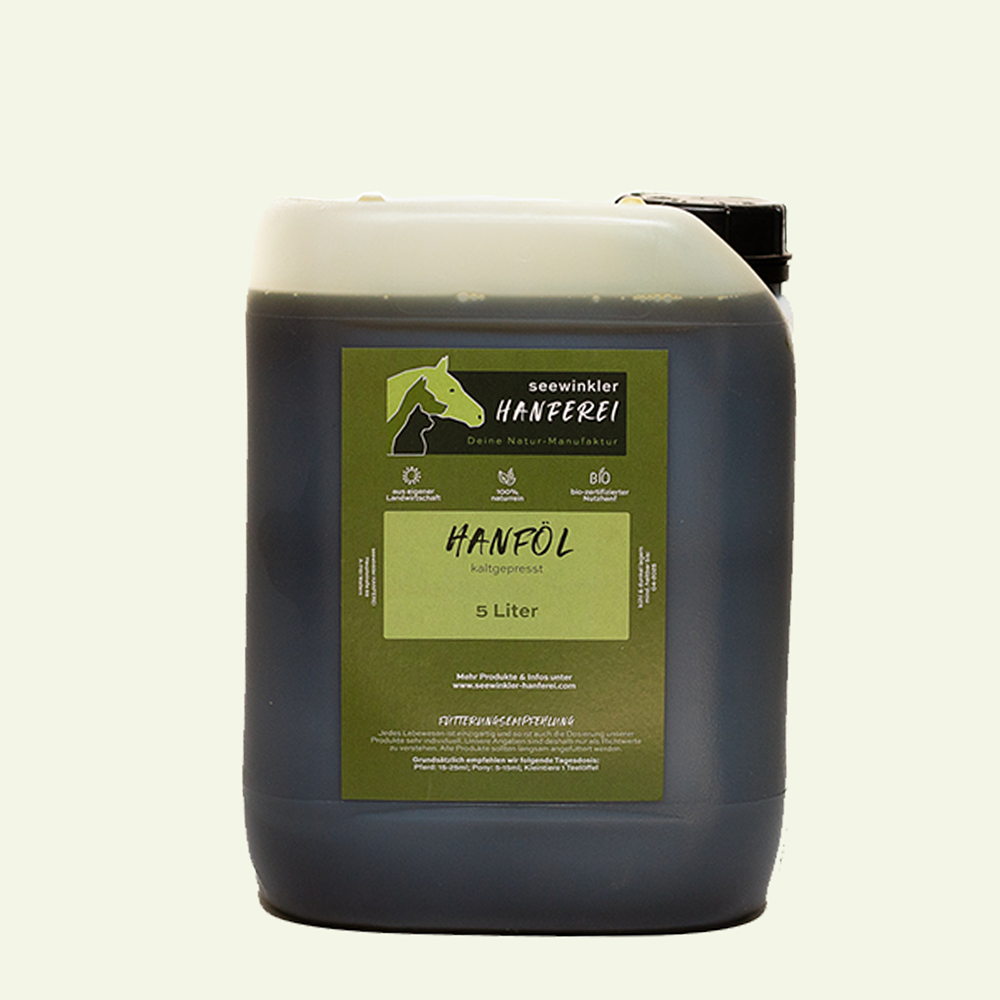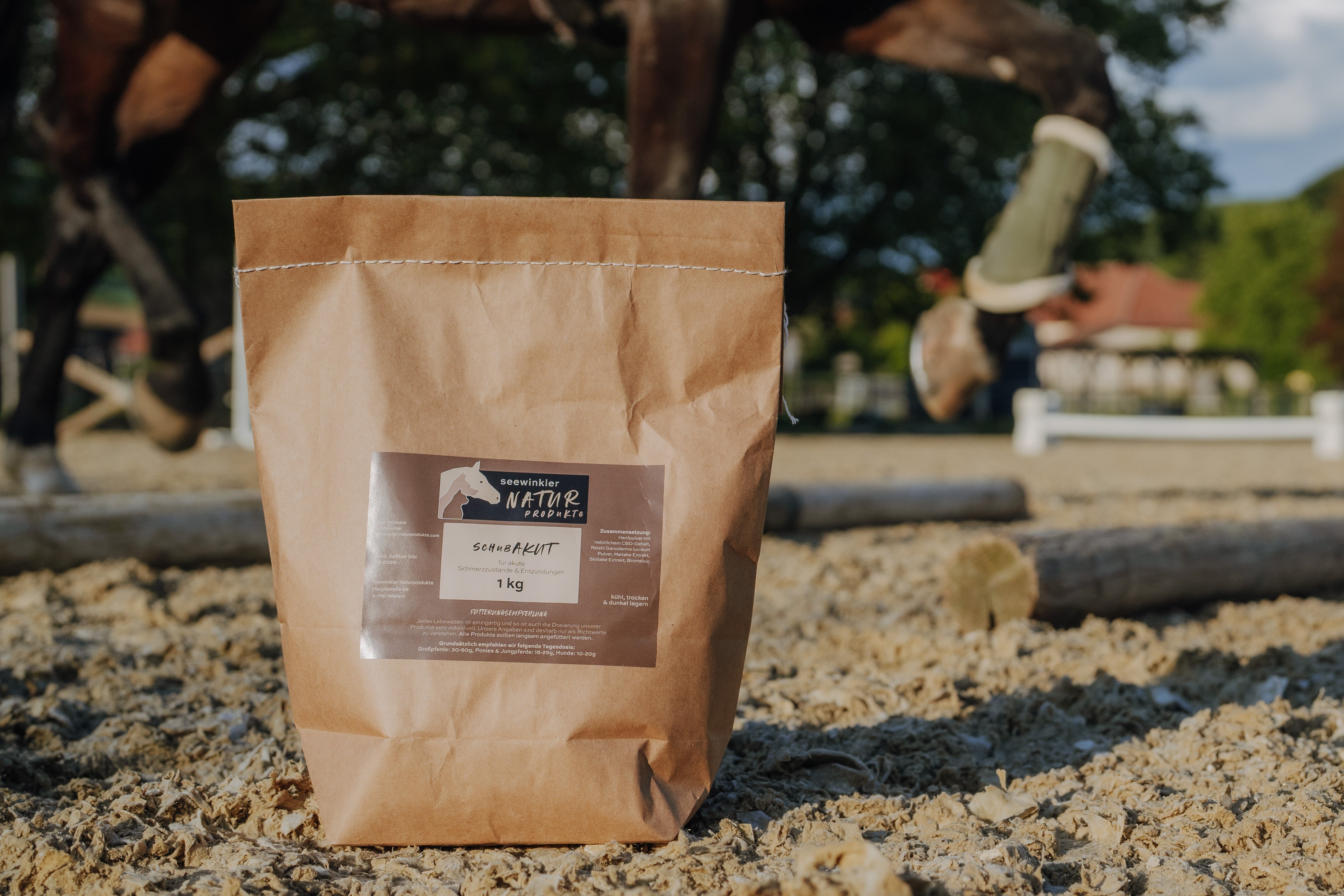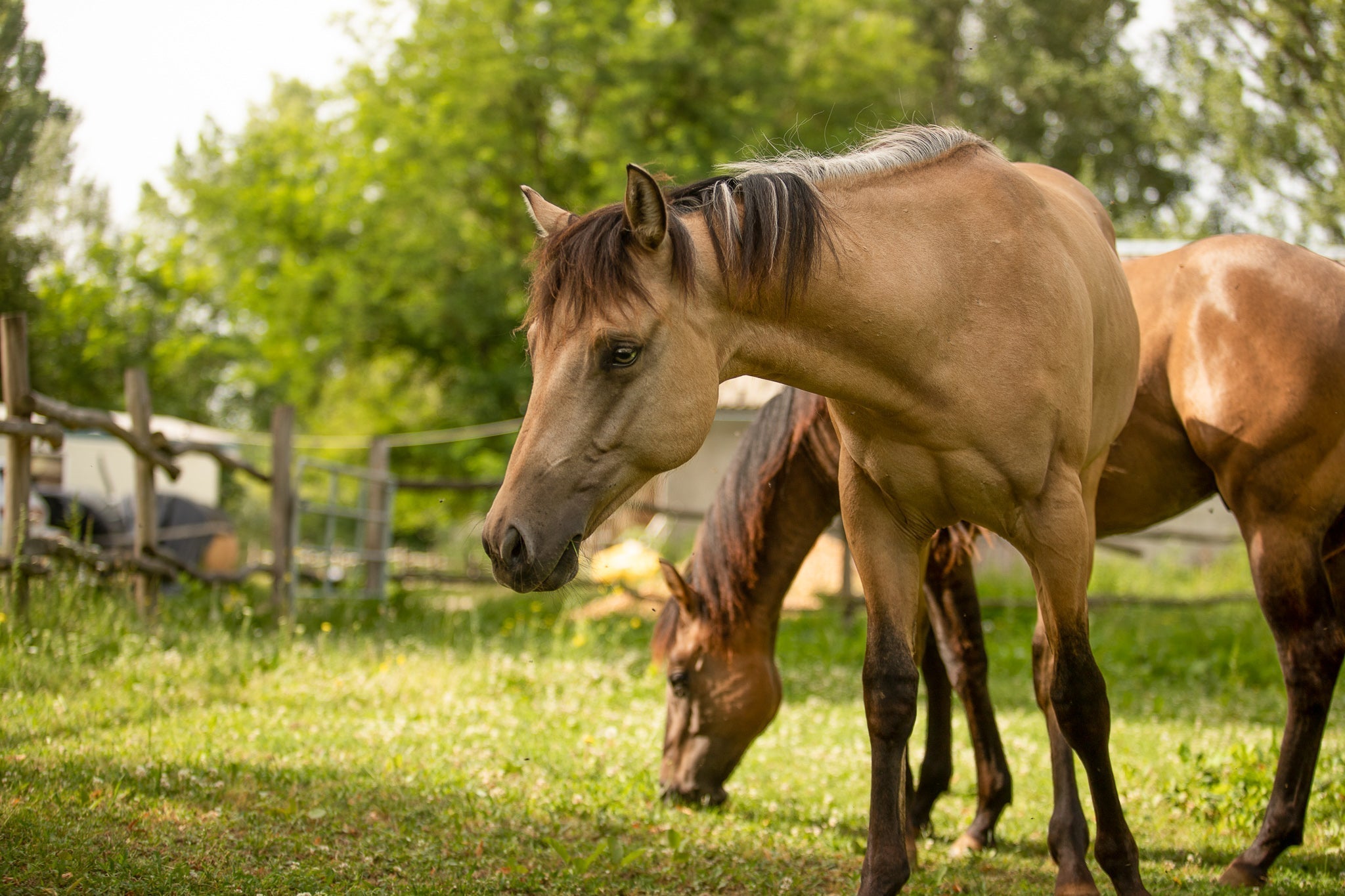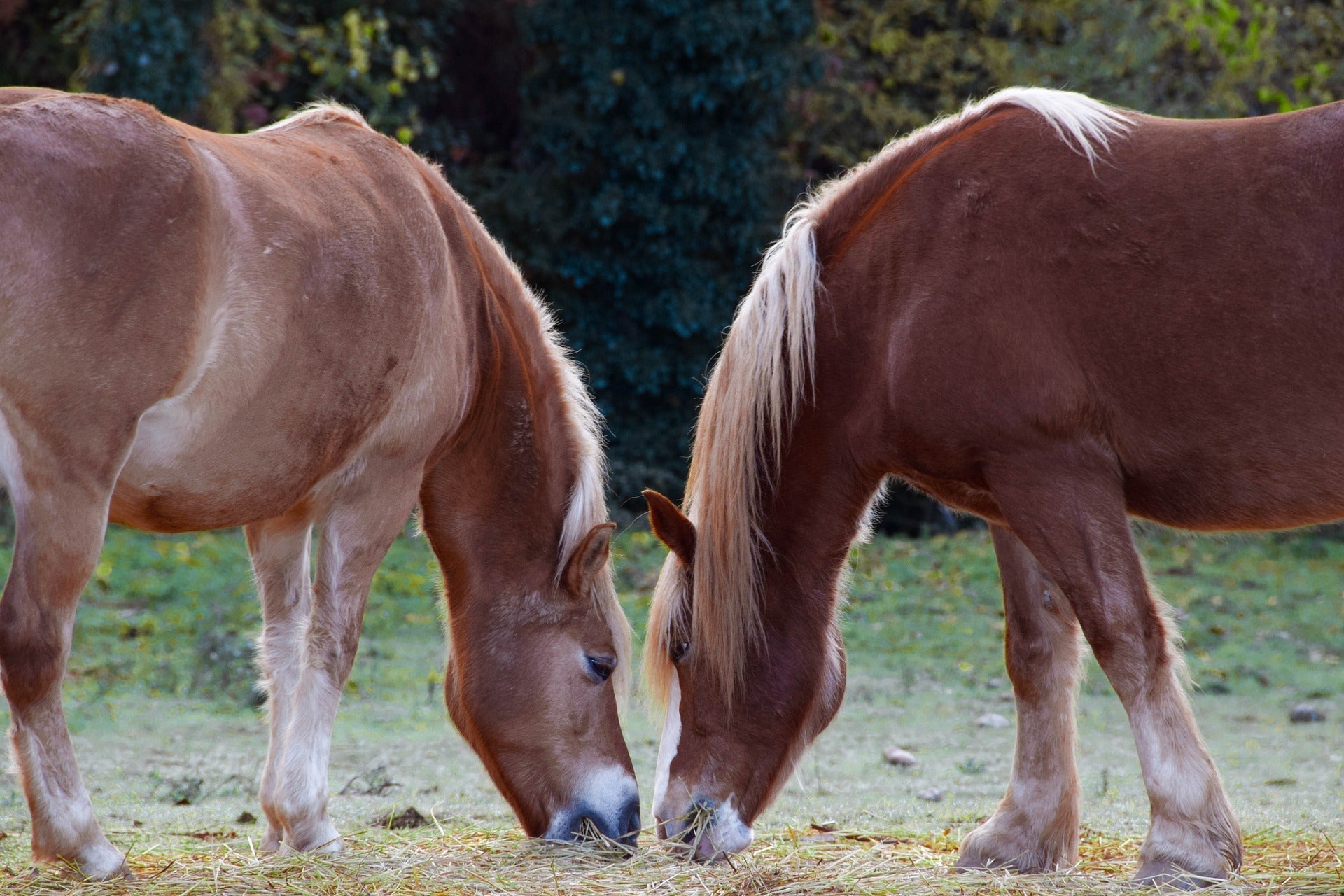Horses are majestic animals that have fascinated humans for centuries. Whether they are kept as mounts, workhorses, or simply as friends, it is important to understand their needs in order to provide the best possible care for them. A crucial aspect of horse health is their digestion. In this blog post, we will explore the amazing world of horse digestion.
Structure of the Digestion in Horses
The horse's digestive tract is a complex system that is optimized for the processing of food and nutrients. Unlike humans, horses are herbivores and have adapted to a special diet over the course of evolution.

The mouth:
Digestion begins in the mouth, where the horse's teeth are used to grind up grass, hay and other feed. The horse's saliva contains enzymes that help with the pre-digestion of starch. It is particularly important here to ensure that horses chew the feed as long and slowly as possible so that it can be sufficiently salivated.
The stomach:
Horses have a relatively small stomach that holds about 10 to 15 liters. This part of the stomach is responsible for the rapid processing of easily digestible nutrients such as proteins and sugar and kills unwanted germs. It is important to note that not too much wet food (mash, hay cobs, beet pulp, etc.) is consumed at once so that the stomach is not overloaded. In addition, large amounts of grain and ready-made feed can remain in the stomach for a long time (up to 5 hours), which can lead to premature fermentation of the starch and thus to irritation of the stomach lining and even ulcers.
The small intestine:
This is the longest part of the digestive tract at around 20 meters and plays a crucial role in the digestion and absorption of nutrients. Carbohydrates, proteins and fats are further broken down and absorbed here - this is where the enzymatic breakdown of the quickly digestible concentrate components takes place. The fiber components of hay and straw, on the other hand, are passed on to the large intestine largely undigested. The better the mouth and stomach have prepared, the easier and more efficiently the intestine can work and it does not lead to overload, hyperacidity or inflammation. Since the feed passes through the small intestine relatively quickly, it is advisable to divide the concentrate/supplementary feed into several small portions (according to performance).
The pancreas:
The pancreas is responsible for the secretion of proteases, lipases and amylases, which are used to break down carbohydrates, proteins and fats. The digestion of oil and fats also takes place here - according to the latest studies, a portion of up to 500ml per day is considered to be tolerable for the body when feeding horses, although this is not a consumption recommendation and we also achieve very positive results with much smaller amounts (e.g. of high-quality hemp oil ).
The large intestine:
The horse's large intestine, which is around 8 metres long and has a volume of almost 130 litres, consists of the cecum, the large and small colon/large intestine. The breakdown of the "indigestible" food components, the crude fibre, takes place in these fermentation chambers. It is used to ferment fibre and cellulose contained in grass and hay. In this section, microbial digestion takes place, which enables horses to use food that is rich in crude fibre. The microorganisms supply volatile, highly digestible fatty acids (acetic, lactic and propionic acid) to provide energy, as well as B vitamins (e.g. biotin, which forms hoof horn, or vitamin B12). The microorganisms require a minimum crude fibre content in the feed in order to survive. If this part of the intestine is out of balance, it has a significant impact on the horse's health.
The rectum & colon:
The colon, which many people will be unfamiliar with, is, together with the rectum, the last section of the digestive tract and plays a crucial role in water recovery and the formation of feces (everything that could not be digested).
The Importance of Microbiota
A key aspect of equine digestion is the role of the microbiota in the cecum. Horses are non-ruminant herbivores and rely on a complex community of microorganisms to digest the cellulose in their diet. These microbes produce enzymes that break down the difficult-to-digest plant fibers, allowing energy to be extracted from these materials.
An incorrect diet or rapid changes in food can disrupt the balance of the microbiota and lead to digestive problems such as colic, hyperacidity, burping or flatulence. Sensitivity to touch on the stomach or back can also indicate digestive problems.
The importance of roughage
Horses rely on a diet rich in fibre to maintain a healthy digestive system. Hay and grass are the main sources of food and should make up the majority of the ration. An adequate supply of roughage helps to support the horse's natural digestive processes and prevents digestive problems.
Roughage should also be included in the concentrate feed so that the horses eat more slowly and salivate the food well - an important process in horse digestion. It is important to note that large quantities of cobs of hay, green oats, sainfoin, alfalfa etc. can put a lot of strain on the stomach and intestines. Horses that are too thin in particular tend to be fed too much - but this can have a counterproductive effect on digestion.
A fascinating process with special needs
Digestion in horses is a fascinating process that is tailored to the specific needs of four-legged animals. Understanding the different digestive organs and the role of the microbiota in the digestive tract is crucial to ensuring the well-being of our horses. Proper nutrition, especially providing sufficient roughage, is key to supporting healthy digestion. A happy and healthy horse starts in the stomach - or more precisely, in its entire digestive tract.
If your horse's digestion is out of balance, you should not only find the cause but also support the digestion in a natural way. We have developed our products gastroBALANCE andgastroAKUT for this purpose . With their special composition of CBD powder, medicinal mushrooms, hyaluronic acid and bromelain, they use the power of nature to help bring the stomach AND intestines back into balance and give your four-legged friend more well-being. In the long term, this will contribute to a healthy future for your favorite.
Read more about fructan, proper grazing and how to support digestion here.
Here are some scientific studies and research results on digestion in horses:
- "Gastrointestinal Tract and Digestive Physiology in the Horse" (1998), by Harold C. Schott II: This comprehensive review covers the anatomy and physiology of the equine digestive tract. It provides an in-depth look at the various digestive organs and processes
- "The Microbiome of the Horse Gastrointestinal Tract and Its Relation to Fermentation and Digestive Health" (2015) by P. Harris, SA Julliand, and PRD Boer: This study examines the microbial community in the horse's gastrointestinal tract and its importance for equine digestion and health.
- "Nutrient Digestibility and Fiber Characteristics of Barley and Barley by-Products in Horses" (2017) by LM Stock et al.: This study looks at the digestion of barley and its by-products in horses. It investigates nutrient digestibility and the effects on horse health.
- "Effects of Feeding and Meal Feeding on Blood Glucose and Insulin Responses in Horses" (2006) by LM Lawrence et al.: This study investigates the effects of feeding practices and meal frequency on blood glucose and insulin levels in horses.
- "Comparison of the Cecal and Fecal Microbiota of Horses in Different Geographic Locations" (2018) by CM Costa et al.: This research focuses on differences in the microbiota of the cecal and fecal intestines of horses in different geographic regions.
- "Equine Gastric Ulcer Syndrome: A Review" (2018) by TA Smith: This review covers the topic of gastric ulcers in horses and their impact on digestion and welfare of the animals.
